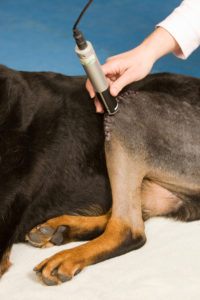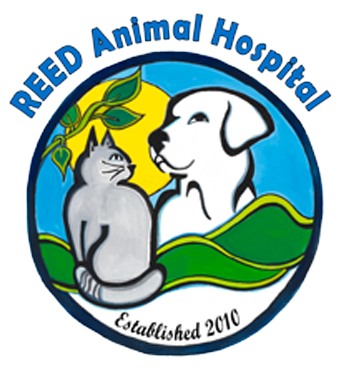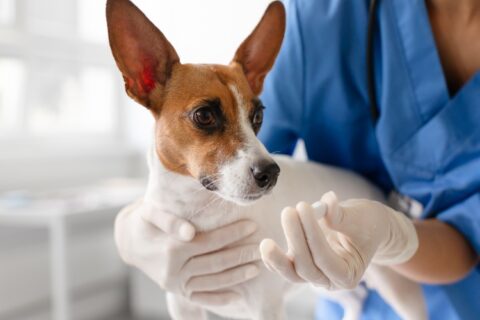The Importance of Treating Your Dog’s ACL Tear
 You may know about anterior cruciate ligament (ACL) tears in humans, but did you know dogs can also tear their ACL? In canines, this thin connective tissue located in the knee is called the cranial cruciate ligament (CCL). Because of the difference in anatomy, a dog’s CCL is always load-bearing, which makes it more prone to wear-and-tear injuries than a human’s ACL.
You may know about anterior cruciate ligament (ACL) tears in humans, but did you know dogs can also tear their ACL? In canines, this thin connective tissue located in the knee is called the cranial cruciate ligament (CCL). Because of the difference in anatomy, a dog’s CCL is always load-bearing, which makes it more prone to wear-and-tear injuries than a human’s ACL.
Signs of a Torn ACL in Dogs
Note that many animal hospitals refer to a CCL injury as an “ACL injury in dogs” because people are more familiar with this term. Your pet may have a torn ACL if they show any of these signs:
- Limping in the hind legs
- Joint stiffness that is most noticeable when resting after physical activity
- Difficulty jumping or rising from the floor
- Sitting with one hind leg stuck out to the side
- Clicking sound when your dog walks
Why Treat Your Dog’s ACL Tear?
If you notice any signs of a torn ACL in dogs, it’s important to treat the condition as quickly as possible. Without care, ACL injuries only worsen over time, and the symptoms become more pronounced. If a tear occurs, which is likely without treatment, your dog will be in a great deal of pain.
To prevent walking on an injured knee, your dog might begin favoring their healthy leg. Overcompensation can lead to the other knee becoming damaged as well. An estimated 60 percent of dogs with a single ACL injury go on to hurt the other knee, resulting in more pain, more necessary treatment, and a longer recovery period.
How to Treat ACL Injuries in Dogs
When determining what treatment to recommend, the vet will consider your pet’s age, size, weight, lifestyle, and energy level. In many cases, the best option is to have a tibial plateau leveling osteotomy (TPLO). TPLO surgery involves cutting and flattening the top section of the shin bone, known as the tibial plateau. Then, a plate and screws stabilize the knee joint in a new position so your dog can walk comfortably.
Each animal recovers at their own pace, but you can expect about a 12- to 16-week recovery time following TPLO surgery. It’s vital to monitor your dog closely and follow your vet’s advice to ensure a full recovery in the shortest time possible. Plan to avoid all physical activity for the first two weeks while the sutures are in place. Then, gradually reintroduce exercise as your dog allows.
At Reed Animal Hospital, we are experts at treating ligament injuries in dogs. Everyone on our team—from the receptionists and assistants to vet technicians and veterinarians—are animal lovers through and through. We will treat your pet as if they were our own!
For more information about our surgical procedures, or to schedule an appointment at one of our animal hospitals, please call us in Campbell, CA at 408-369-1788 or in Saratoga, CA at 408-647-2906. You can also contact us online.


